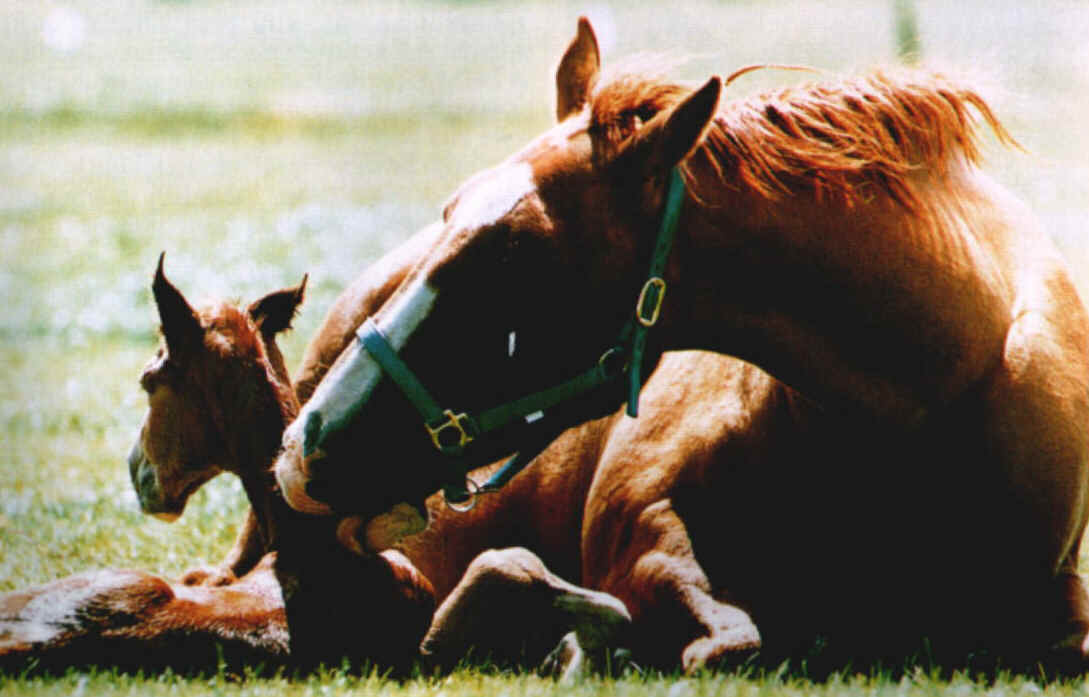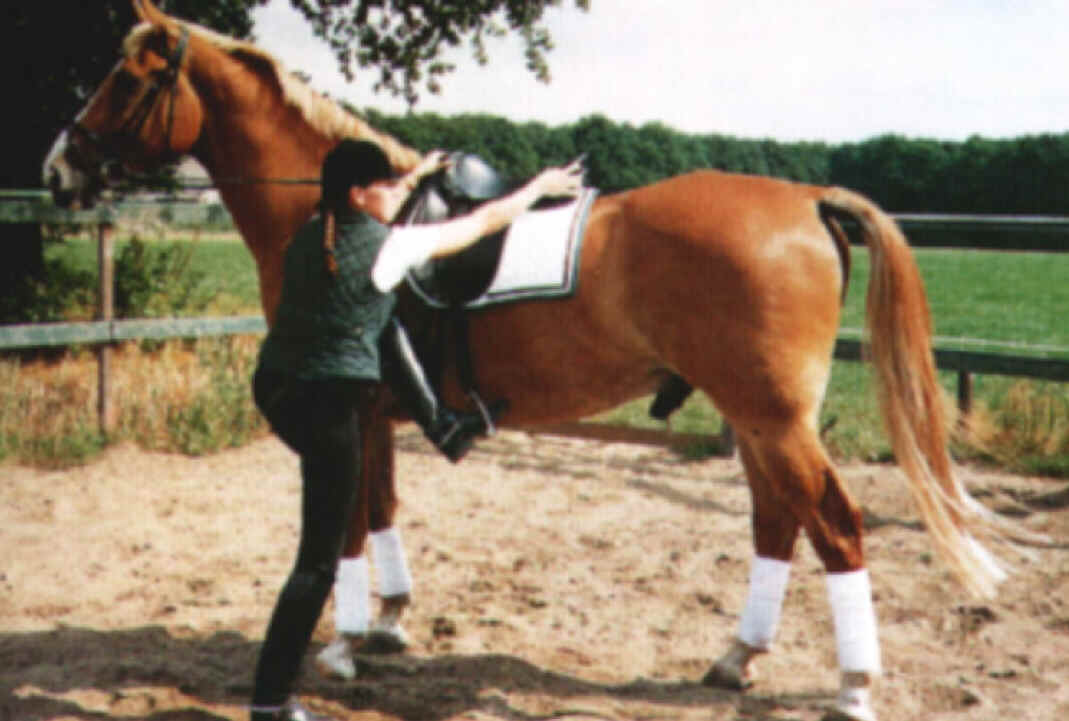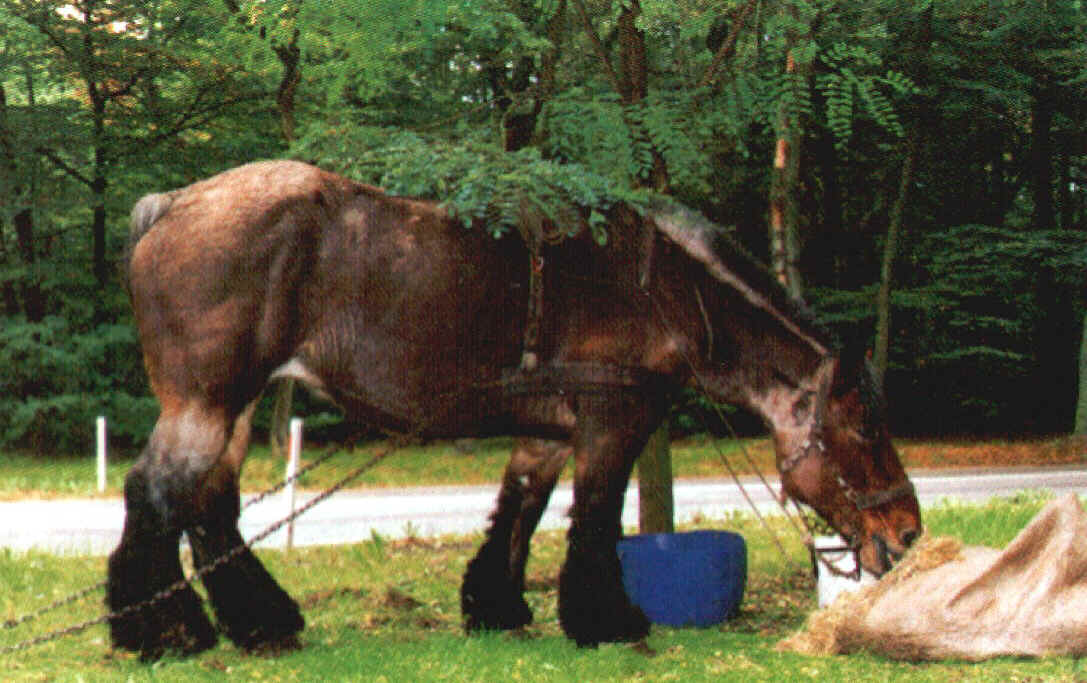



PALOMINO / PAINT
Characteristic of a distinctive coloration type of show or saddle horse. The coat is yellowish and the mane and tail are silver or white. Some degree of white marking on the face and legs is also allowed by registries. As the offspring do not necessarily show the same color pattern, the palomino is not a true horse breed, although there is a Palomino Horse Association. Palominos may also conform to the standards for the Arabian or the American quarter horse.
 Also
called pinto,
breed of horse with spotted coloring. The paint played a large
role in the early North American West. It descended from
Andalusian horses, which Spanish conquistadors brought to the
Americas in the 16th century. The name comes from the Spanish
pintado, meaning painted, and cowboys simply called this horse
the paint. The paint has a powerful, compact body. It stands
about 142 to 158 cm (about 56 to 62 in, or 14 to 15.5 hands) high
at the withers (the high part of the back, located between the
shoulder blades). The well-muscled legs and the back are short,
and the chest is wide and deep. The head is straight with a wide
face and medium-sized ears. Because it lacks uniform physical
characteristics, the paint is not regarded as a true breed
despite similarities among individual horses. However, the paint
is considered a color breed because the primary feature that
distinguishes this horse is its color pattern. It appears with
either of two types of coloring: overo, a solid-colored coat with
large, uneven patches of white all over the body; or tobiano, a
white coat with large, uneven patches of solid color. The
American Paint Horse Society registers western stock horses with
paint coloring, primarily the quarter horse. The Pinto Horse
Association registers painted horses of any type. After Spanish
conquistadors brought horses to North America, Native Americans
captured spotted horses from these settlers. Those spotted horses
eventually developed into the paint. Many Native American tribes
especially the Plains peoples valued the paint for its
decorative-looking coat, as cowboys did later. Plains peoples
also appreciated the paint because it blended with the
surrounding habitat. Modern day breeding programs have developed
the paint as a versatile horse for herding cattle, recreational
riding, and show competition.
Also
called pinto,
breed of horse with spotted coloring. The paint played a large
role in the early North American West. It descended from
Andalusian horses, which Spanish conquistadors brought to the
Americas in the 16th century. The name comes from the Spanish
pintado, meaning painted, and cowboys simply called this horse
the paint. The paint has a powerful, compact body. It stands
about 142 to 158 cm (about 56 to 62 in, or 14 to 15.5 hands) high
at the withers (the high part of the back, located between the
shoulder blades). The well-muscled legs and the back are short,
and the chest is wide and deep. The head is straight with a wide
face and medium-sized ears. Because it lacks uniform physical
characteristics, the paint is not regarded as a true breed
despite similarities among individual horses. However, the paint
is considered a color breed because the primary feature that
distinguishes this horse is its color pattern. It appears with
either of two types of coloring: overo, a solid-colored coat with
large, uneven patches of white all over the body; or tobiano, a
white coat with large, uneven patches of solid color. The
American Paint Horse Society registers western stock horses with
paint coloring, primarily the quarter horse. The Pinto Horse
Association registers painted horses of any type. After Spanish
conquistadors brought horses to North America, Native Americans
captured spotted horses from these settlers. Those spotted horses
eventually developed into the paint. Many Native American tribes
especially the Plains peoples valued the paint for its
decorative-looking coat, as cowboys did later. Plains peoples
also appreciated the paint because it blended with the
surrounding habitat. Modern day breeding programs have developed
the paint as a versatile horse for herding cattle, recreational
riding, and show competition.
Belgium Heavy Draft horse - Cleveland Bay - Clydesdale - Dutch Warmblood - Gelderlander - Holsteiner - Irish Draught - Lippizaner - Missouri Fox Trotter - Morgan Horse - Mule - Mustang - Oldenburger - Palomino - Percheron - Peruvian Paso - Pinto - Quarter Horse - Selle Francais - Standardbred - Tarpan - Tennessee Walker - Trakehner - Ungulate (onevenhoevigen) - Zebra